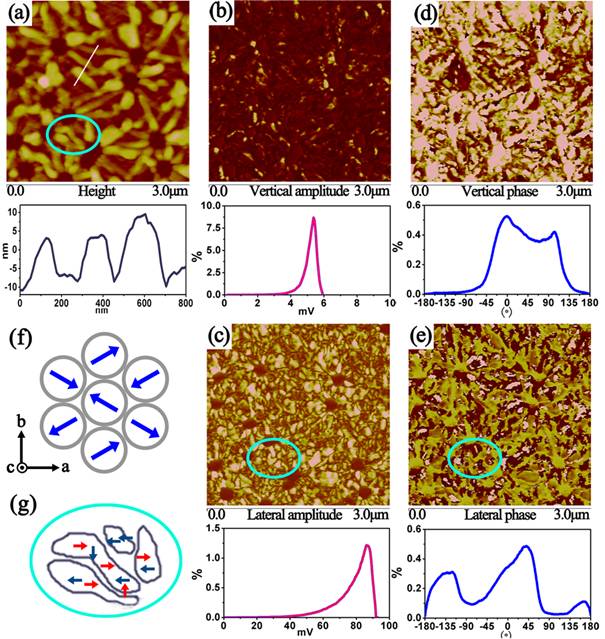Piezoelectric polymers have been used in a diverse range of application including sensing, actuation, data storage, and various acoustic and microelectromechanical systems. Their special characteristics like high electric breakdown field, light weight, flexibility and ease of processing, etc., make them very promising for applications in many new flexible devices.
The recently developed new devices have stimulated renewed research interest on highly ordered arrays of piezoelectric P(VDF-TrFE) nanostructures. Compared to the widely used nanoimprint lithography or AAO template methods, self-assembly based template-free approach is much more desirable for fabricating nanostructured piezoelectric polymers as far as the facility and processing conditions are concerned.
However, self-assembly of polymer is rather difficult. Particularly, very few have been tried for P(VDF-TrFE) using self-assembly type approaches. Researchers from the Chinese Academy of Sciences, Beijing Center for Chemical and Physical Analysis and the University of Science and Technology Beijing cooperate to try a simple template-free crystallization approach to fabricate assemblies of ordered P(VDF-TrFE) nanorods.
In their approach, the nanostructure is formed via confined crystallization of a thin P(VDF-TrFE) layer. The piezoelectric response as well as the molecular orientation of the P(VDF-TrFE) nanorods are analyzed by combing Vector piezorelsponse force microscopy (PFM) and vibrational spectroscopy.
The significant difference in vertical and lateral piezoelectric responses of the nanorods reveal that their molecular dipoles are preferentially oriented parallel to the substrate plane. In addition, dipole orientation distribution map in the nanorods is derived by analyzing the vertical and lateral PFM amplitude and phase images. The ‘textured’ nanorods with highly anisotropic piezoelectric response are of importance for both fundamental science and application points of view, because they can be used both for investigating the size dependent behaviors and for new devices such as flexible nanogenerators.

Fig. 1 (a) to (e) are the AFM topography and PFM images of the P(VDF-TrFE) nanorod assemblies: (a) AFM topography and the height profile, (b) Vertical amplitude image and the distribution profile, (c) Lateral amplitude image and the distribution profile, (d) Vertical phase image and the distribution profile, (e) Lateral phase image and the distribution profile, (f) Schematic illustration of the dipole orientation distribution, (g) Schematic illustration of the dipole distribution map of a region marked by the ellipse in (a) (Image by CHEN Xiaosui).
This research was supported by the “100 Talented Program” of Chinese Academy of Sciences, the National Key Basic Research Program of China (973 Program, Grant No. 2013CB632900) and the National Science Foundation of China (NSFC No. 11074277).
References:
CHEN Xiaosui, WANG Yunli, CAI Kai, BAI Yang, BO Shuhui, GUO Dong. P(VDF-TrFE) Nanorod Assemblies with Anisotropic Piezoelectric Properties Investigated by Piezoelectric Response Microscopy. Journal of Applied Physics (vol. 116, no.6, pp. 066821- 066821-7, 2014). DOI: http://dx.doi.org/+10.1063/1.4891402.
Contact:
GUO Dong
Institute of Acoustics, Chinese Academy of Sciences, 100190 Beijing, China
Email: dong.guo@mail.ioa.ac.cn


